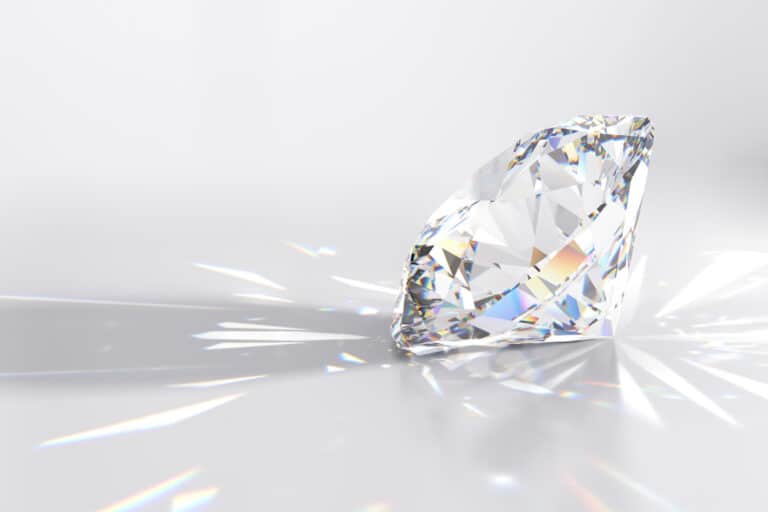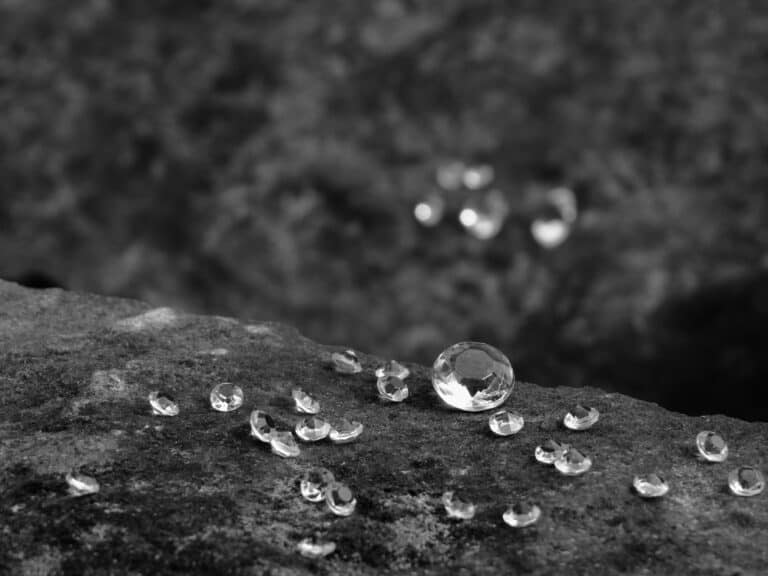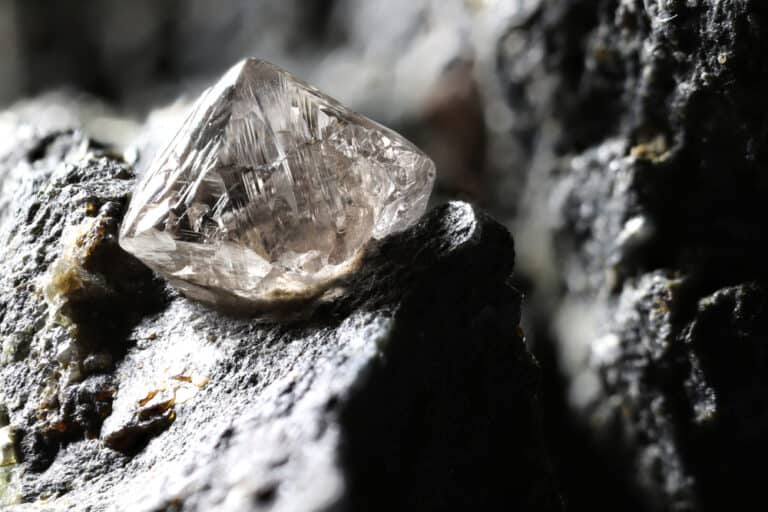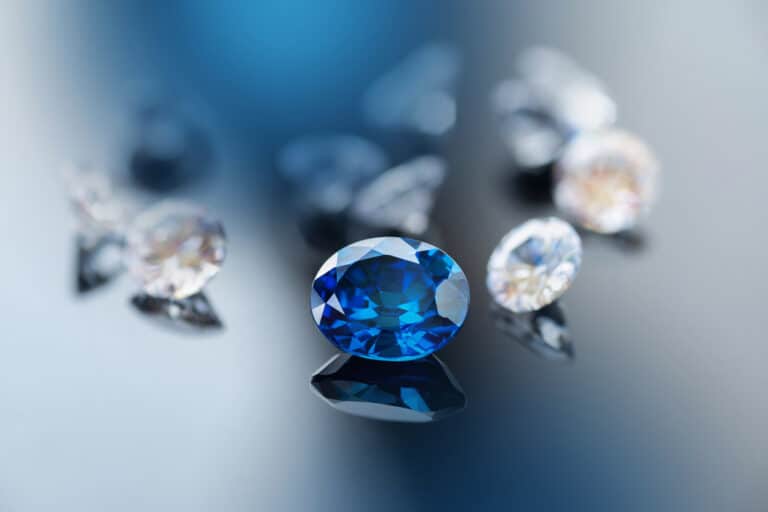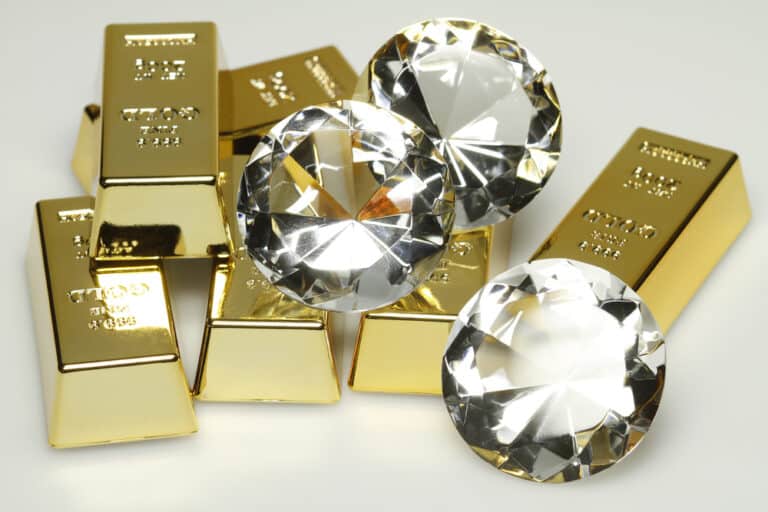Diamonds are the fascinating result of a mysterious process that occurs deep within Earth’s crust. Diamonds are very expensive, and therefore it’s hard to imagine that these rare beauties can possibly end up scratched or damaged. A diamond is one of the hardest, toughest substances on Earth, but is it tough enough to resist scratches?
Diamonds are the hardest known minerals on Earth and are ranked the highest on the Mohs Hardness Scale. All types of natural diamonds are entirely scratch-resistant to any other minerals and materials. The only item that can scratch a diamond is another diamond.
Diamond jewelry is bought at a very high price, assuming that its beauty will last for a lifetime. Is it possible for a diamond to lose its brilliant sparkle through scratching?
What Determines A Mineral’s Resistance To Scratching?
A mineral’s susceptibility to scratching is determined by measuring the relative hardness of the mineral. The Mohs Hardness Scale uses a set of ten minerals, with scores from 1 to 10, as a reference to determine the hardness of other minerals.
The higher the Mohs score of a mineral, the harder the mineral and the more resistant it is to scratching. Therefore, those minerals with low Mohs scores can be scratched by minerals with a higher Mohs score.
Why Are Diamonds So Hard?
A mineral’s molecular composition determines its hardness. When the bonds between the atoms are strong, the atoms are harder to separate when pressure is applied. Soft minerals, e.g., talc, have very weak bonds between their atoms, making it easy to scratch with even a fingernail.
A diamond is comprised of carbon atoms that have undergone extreme pressure and heat deep within the Earth’s mantle. The covalent bonds between the carbon atoms make it very hard to separate them using pressure from any other object. Diamonds take the highest ranking on the Mohs Hardness Scale, with a perfect score of 10.
Because of the strong bonds between their carbon atoms, diamonds are known as the toughest minerals on Earth.
Different Types of Diamonds
Natural diamonds are classified into different groups based on their chemical and physical attributes.
- Type 1a – The most common type of diamond with nitrogen that gathers in clusters, giving the diamond a yellowish tint.
- Type 2a – The rarest diamond with the most sparkle. It contains no impurities and no nitrogen and has different fluorescent properties.
- Type 1b – Rare diamonds with scattered nitrogen atoms that give them a yellow, orange, or brown color.
- Type 2b – These diamonds contain carbon and boron (they have no nitrogen). They are usually bluish-grey and are considered rare.
Can A Diamond Easily Be Scratched?
For a mineral to be able to scratch another mineral, it would need to have the same or a higher score on the Mohs Hardness Scale. Anything with a hardness below a diamond cannot scratch a diamond. Since diamonds rank the highest on the scale with a score of ten, the only mineral that has the ability to scratch a diamond is, you guessed it… another diamond!
As mentioned above, there are different types of diamonds, with some diamonds varying in color. This may leave you wondering whether all diamonds are equally resistant to scratching. The answer is: yes. The diamond’s color does not affect its hardness. All diamonds have the same hardness irrespective of color or shape.
Can You Scratch A Diamond With Sandpaper?
The thought of using sandpaper on a diamond makes one cringe. However, you will be glad to know that sandpaper does absolutely no damage to a diamond. Despite the harshness of its grit, sandpaper still remains softer than diamond, being between 7 and 9 on the Mohs Hardness Scale. Sandpaper can easily scratch other gems like emeralds and rubies, but it won’t leave a single scratch on a real diamond.
Can You Scratch A Diamond With Metal?
Although metals like steel and titanium are hard and strong, they’re still not strong enough to scratch a diamond. Most metals score below five on the Mohs Hardness Scale, which is far below diamonds. Even those metals that score 7 to 9 on the Mohs scale, e.g., iron or zinc, are not hard enough to scratch damage.
Metals cannot scratch diamonds, but diamonds can scratch metals. A diamond can easily scratch even the strongest metals, which include gold and silver.
Can Diamonds Scratch Other Materials?
Because diamonds are ranked as the hardest mineral on the Mohs Hardness Scale, they can scratch literally anything. A diamond can scratch anything that falls below it on the Mohs Hardness Scale (which is everything).
Diamonds can scratch and damage glass, stone, concrete, metals, and other minerals. Diamonds can also scratch other diamonds. The only way to scratch or cut a diamond is with specialized tools like laser or other diamonds attached to steel blades or machinery.

How Do Diamonds Get Scratched?
If you have diamond jewelry and you’ve noticed scratches on the actual diamond, there is only one possible explanation. Only other diamonds can scratch a diamond. So, therefore, the only way your diamond could have obtained scratches is if it came into contact or scraped against other pieces of diamond.
Diamond scratching most likely occurs during the transportation process of diamonds. Diamond dealers often transport diamonds in little packets of folded paper, which, if not handled properly, can cause diamonds to bang against each other, causing scratches.
Diamonds can also scratch if diamond jewelry is stored incorrectly or placed together in the same jewelry box.
Do Scratches Affect A Diamond’s Durability?
A diamond that’s been grazed with a few scratches here and there will still last just as long as a scratch-free diamond. Scratches do not weaken or affect the durability and quality of a diamond in any way. Scratches won’t worsen over time and won’t cause chipping or cracking, either.
How To Do A Diamond Scratch Test
For many years, a “scratch test” was done to determine whether a diamond was real or fake. However, today the scratch test on its own no longer proves entirely accurate. Fake diamonds like cubic zirconia, moissanite, and black spinel have also been found to be extremely scratch-resistant and durable. These materials may pass as real diamonds due to their hardness and high scratch resistance to most other materials, but they won’t be able to scratch a real diamond.
A diamond scratch test is done by scraping the diamond stone against a piece of glass or a mirror. If the glass or mirror gets scratched, then the stone is most likely a diamond. You should take caution when doing the test because although diamonds are scratch-resistant, they can still be chipped or cracked (depending on their cut and shape).
Can You Repair A Scratched Diamond?
You can easily repair a scratched diamond by polishing the surface of the stone. If the scratches are more severe, then recutting is also an option. However, it is important to consider the positioning of the scratches and the initial carat weight of the diamond before attempting to fix the scratches.
Polishing works perfectly to remove surface-level scratches on any diamond and won’t affect the carat weight of a diamond. Recutting the diamond can remove the scratches but will result in a loss of size. Recutting a diamond will most likely not be worth it if it is fairly small.
Conclusion
You don’t have to be worried about scratching the diamond on your engagement ring or other diamond jewelry pieces. If your diamonds are full of scratches, they may not be real diamonds after all. The fact that diamonds can only be scratched by other diamonds is another special characteristic that makes diamonds stand out above all other gems.
References
- https://www.qreport.com.au/blog/common-ways-diamond-rings-can-be-damaged
- https://www.gemsociety.org/article/does-diamond-hardness-matter/
- https://www.angara.com/jil-magazine/what-can-scratch-a-diamond/
- https://diamond101.com/can-you-scratch-a-real-diamond/
- https://www.naturallycolored.com/diamond-education/can-you-scratch-a-diamond
- https://www.leibish.com/what-can-scratch-a-diamond-article-1484
- https://www.astteria.com/blog/2022/04/26/what-can-scratch-a-diamond/
- https://somethingborrowedpdx.com/can-you-scratch-a-diamond/
- https://conciergediamonds.com/blogs/blog/top-ten-diamond-donts
- https://tvon.com/blogs/jewelry-blogs/types-of-diamonds
- https://www.rarecarat.com/education/inclusions/dont-let-scratches-get-you-in-a-scrapediamond-scratch-inclusions
- https://www.whiteflash.com/diamond-education/diamond-polishing/
- https://mjjewellers.ca/how-scratch-proof-is-my-diamond-ring/
- https://www.leibish.com/what-can-scratch-a-diamond-article-1484
- https://bixlers.com/blogs/education/can-you-scratch-a-diamond-such-as-the-one-on-your-wedding-ring

